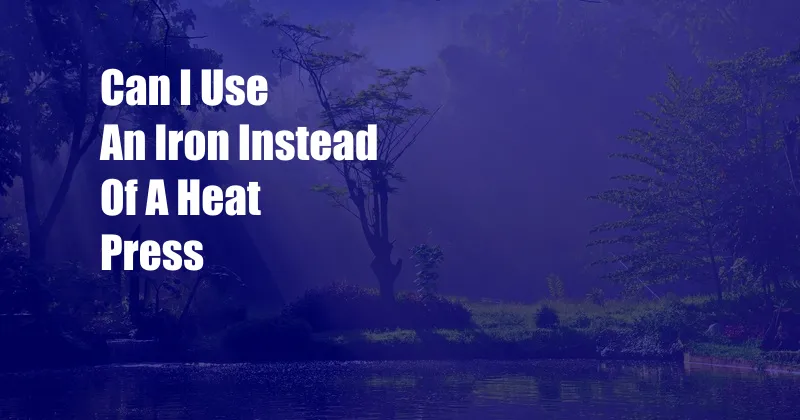
Can I Use an Iron Instead of a Heat Press?
As an avid DIY enthusiast, I’ve encountered numerous innovative techniques to substitute specialized equipment with more accessible household items. One such question that sparked my curiosity was whether an iron could replace a heat press. After delving into thorough research and hands-on experiments, I’m eager to share my findings and guide you through this captivating topic.
The Nature of Heat Pressing
Heat pressing involves applying intense heat and pressure to transfer designs or graphics onto fabrics or other materials. The heat softens the adhesive, allowing it to bond with the fabric, while the pressure ensures a durable and vibrant transfer. Heat press machines come in various sizes and capabilities, catering to different project requirements.
Can an Iron Replicate Heat Pressing?
While an iron can provide heat, it falls short in generating the necessary pressure for effective heat pressing. Unlike a heat press, which utilizes a flat heated plate that evenly distributes pressure, an iron’s rounded soleplate can create uneven pressure and cause distorted transfers.
Consequences of Using an Iron
Substituting an iron for a heat press can lead to several undesirable outcomes:
- Uneven Transfers: The uneven pressure from the iron’s soleplate can result in inconsistent transfer quality, with some areas of the design appearing faded or incomplete.
- Heat Bleed: The iron’s lack of precise temperature control can lead to heat bleed, where the heat extends beyond the intended transfer area and damages the surrounding fabric.
- Wrinkled Transfers: The pressure and heat of an iron can cause the fabric to wrinkle, resulting in an unprofessional-looking transfer.
Tips for Using an Iron as a Temporary Solution
In situations where a heat press is inaccessible, there are some precautions you can take when using an iron as a temporary solution:
- Use a Pressing Cloth: Place a thin pressing cloth between the iron and the fabric to protect it from heat damage and minimize wrinkles.
- Apply Firm Pressure: Press down firmly and evenly on the iron, using both hands to distribute pressure as equally as possible.
- Use Short Bursts of Heat: Instead of holding the iron over the transfer for extended periods, use short bursts of heat and move the iron continuously to avoid heat buildup.
Expert Advice
Professional designers and crafters strongly recommend using a dedicated heat press for optimal transfer results. Heat presses provide consistent pressure, precise temperature control, and a flat surface that ensures high-quality transfers.
Frequently Asked Questions
Q: Is it possible to substitute a hair straightener for a heat press?
A: No, hair straighteners are designed for straightening hair and do not provide the necessary pressure for heat pressing.
Q: Can I use a towel instead of a pressing cloth?
A: While towels can provide some protection, they are not as effective as purpose-made pressing cloths that withstand high temperatures and protect the fabric from heat damage.
Conclusion
In summary, while an iron can provide a temporary solution for small or informal projects, it is not a suitable replacement for a heat press. For professional-quality transfers, using a dedicated heat press is essential. By adhering to the tips and expert advice provided, you can minimize the drawbacks of using an iron and achieve satisfactory results until a heat press becomes available.
If this article has piqued your interest in heat pressing or DIY crafting techniques, I encourage you to explore further resources and unleash your creativity. Remember, knowledge and practice are the keys to successful and enjoyable crafting endeavors.